
Last week, Rob asked for your opinions and photos of slab projects you’ve made. Here’s what’s arrived in our mailbag. Thanks to all who have shared! – Editor
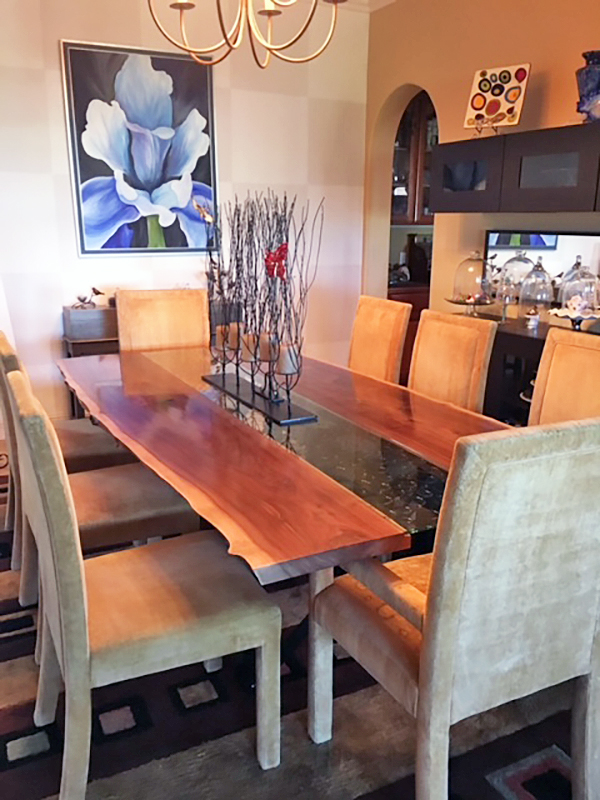
“I love my slab table. It seats 10 and looks great.” – Steve Leder
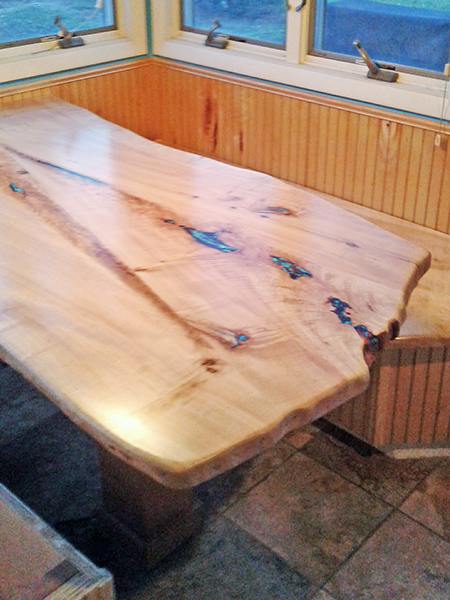
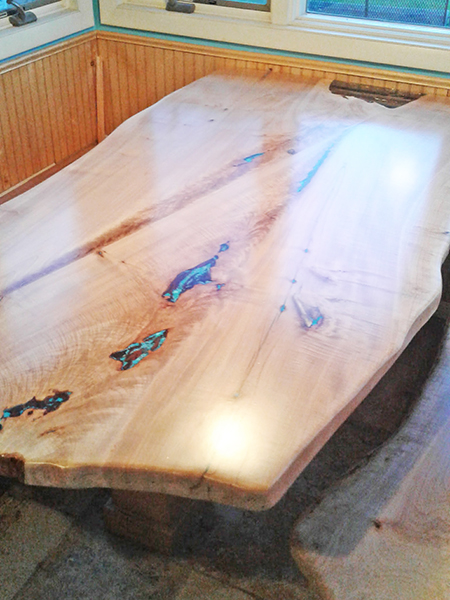
“I love the live-edge trend. I believe the use of live edge started with George Nakashima, and I for one am happy to see it come back. I do wonder how long it will last this time. Here are a couple pictures of a live-edge kitchen table a built several years ago for a friend. It is built from silver maple urban lumber from Fort Collins, Colorado.” – David Weber
“I’m a fan of slabs in the context of making sound furniture. I’m inclined to agree that likely in the near future, it’ll swing back the other way on the pendulum for popularity with regard to river tables and slabs being featured as really the only element of a piece with concrete or steel minimalist supports. I’ve been fortunate to get my hands on some, and they are great for tabletops and bench seat tops, but I don’t really see them as much different from reclaimed material in practice. Perhaps for primarily machine-based woodworkers, the irregularities can be problematic, but chisels, drawknives and handsaws don’t care. It’s just one more option in the toolkit for incorporating interesting textures into your work and an opportunity to remember good joinery practices to keep it from breaking over time.” – Ethan R. Chitty
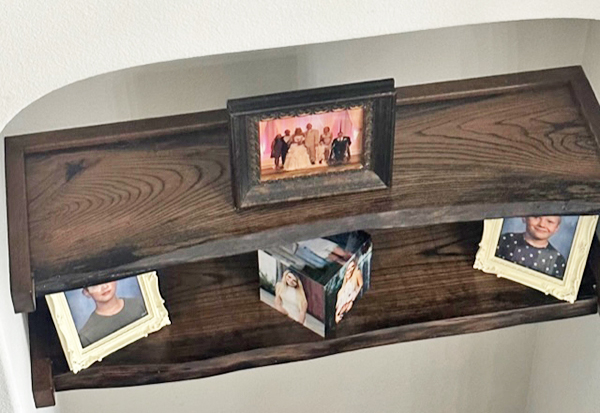
“Here are six live-edge oak shelves with epoxy-filled voids. Under the shelves will be 42″-tall cabinets of oak with raised panel doors.” – Dennis Young
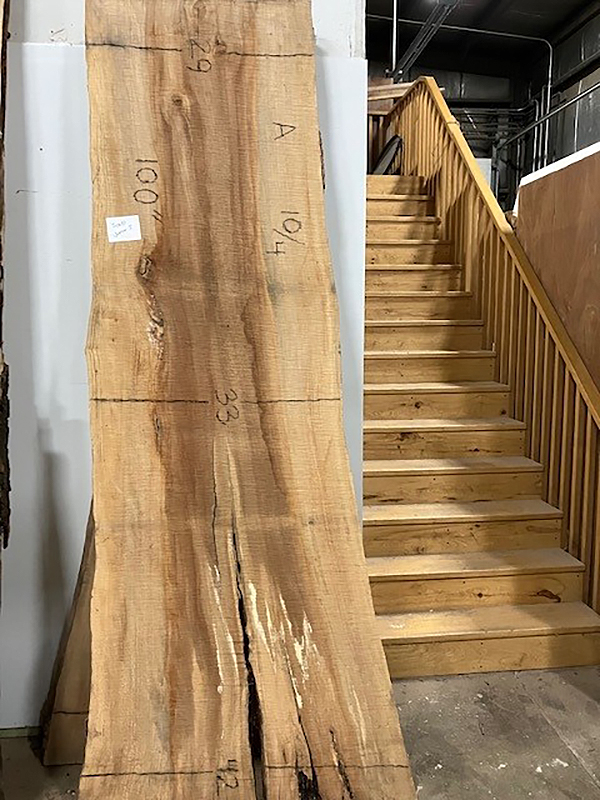
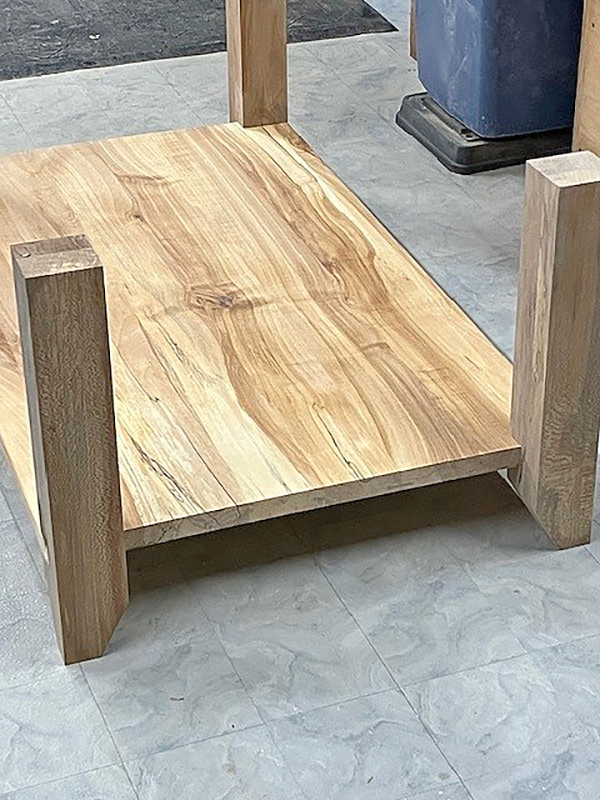
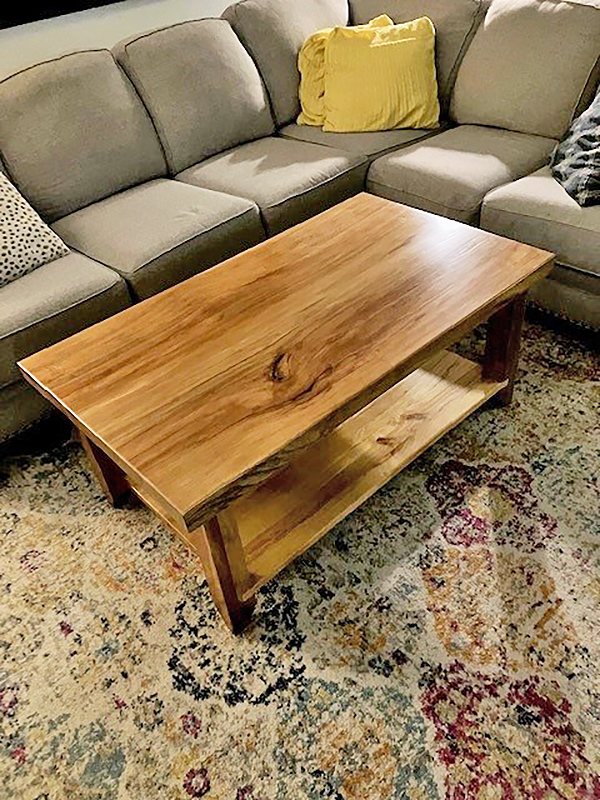
“This is a birch slab coffee table I made using a 3”-thick slab, 100” long and 25” to 40” wide. I had my local lumberyard cut it to rough size. Then I built the table and finished it with clear polyurethane. I think it turned out great, and my customer loves it.” – Mike McNichols
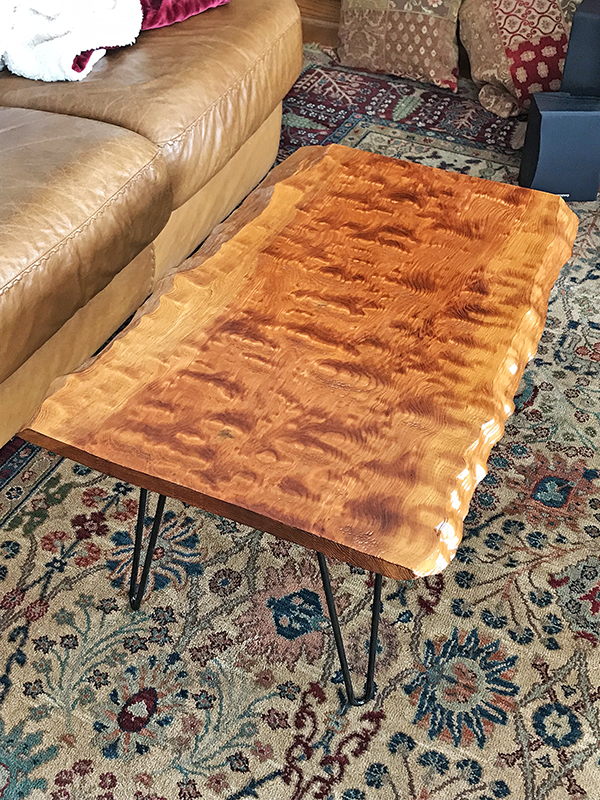
“Here is the one-and-only slab project that I have done. I found the slab in a pile of wood at an estate sale. It was covered with dust. I paid $15 for it. I’ve been told that it is quilted bubinga.” – Bob Beran
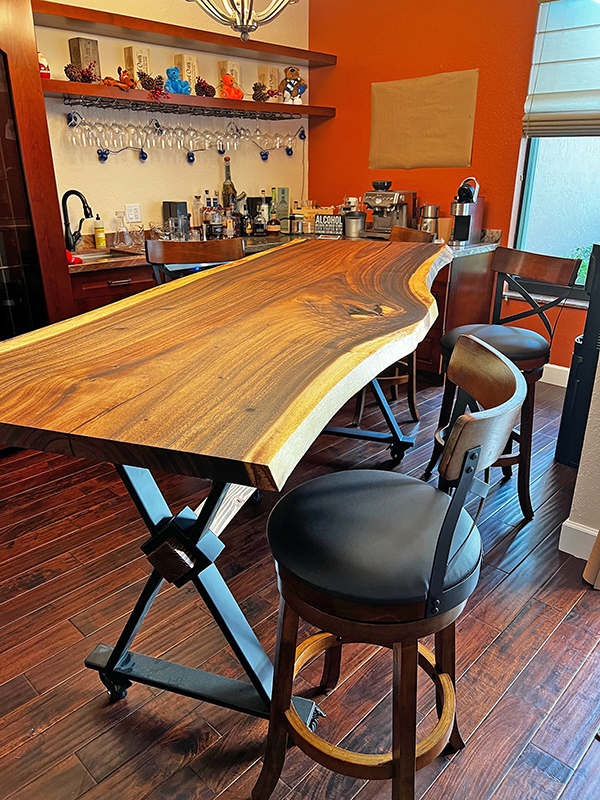
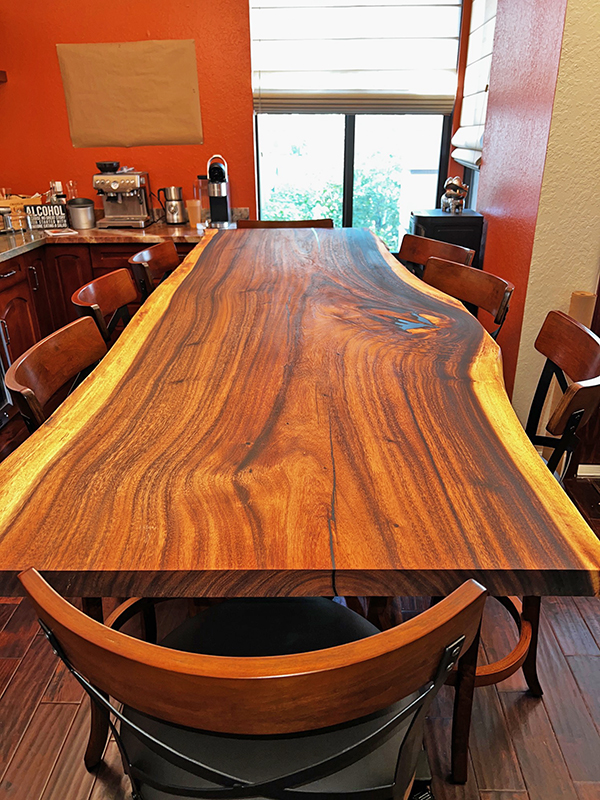
“I just read your latest Weekly editorial about slab projects and wanted to share some pictures of a bar table that I did. The slab is monkey pod wood with an oil-rubbed finish. The bases are on lockable wheels to make it easier to move, if needed.” – Dave Bontjes
“I haven’t tried building with slabs, per se, but find them to be most excellent in charcuterie boards.” – Ben Delahay
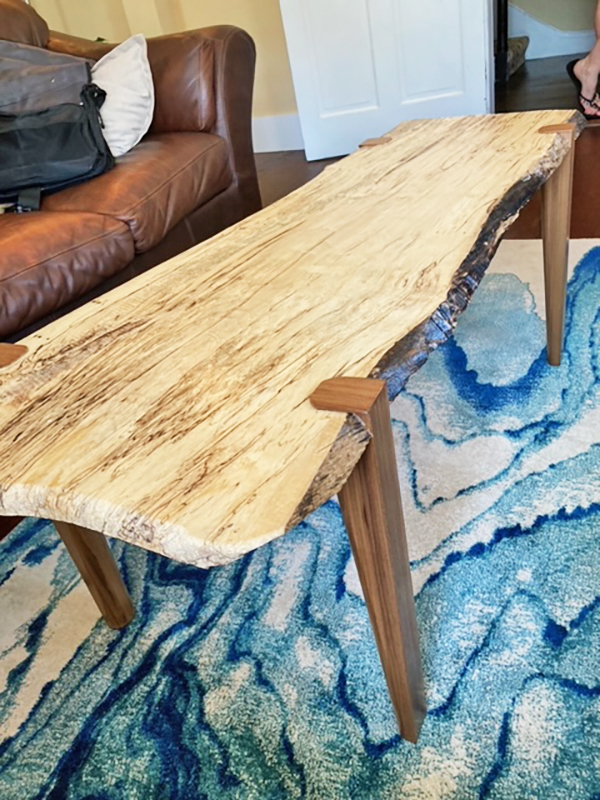
“I like the look of live-edge lumber, but it seems most of the furniture pieces are made using metal legs. I don’t care for that particular look. It also requires minimal woodworking skills. Here’s a photo of one of my live edge projects.” – Don Rosano
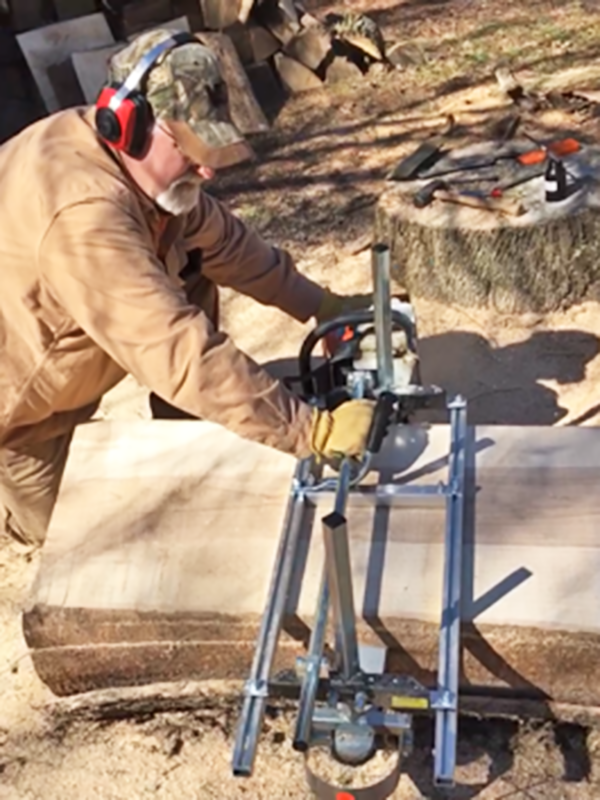
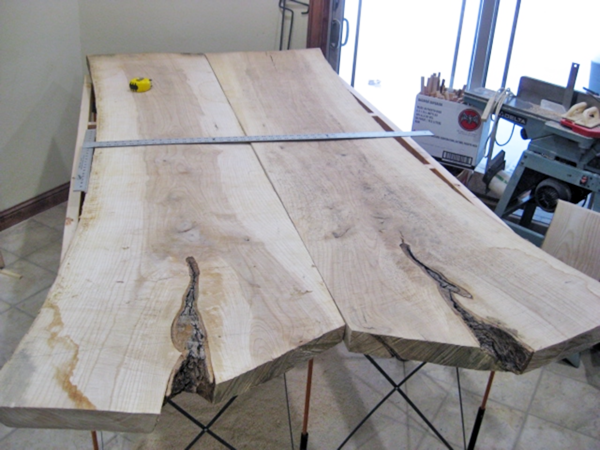
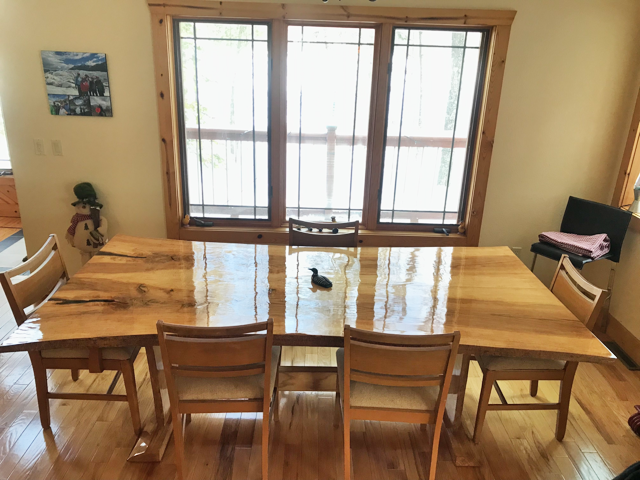
“Cutting slabs and turning them into useful items (some would say heirlooms!) has been a fun and educational addition to my woodworking repertoire. Here’s an example of a large table I made from two large slab flitches.” – Gary Schroeder
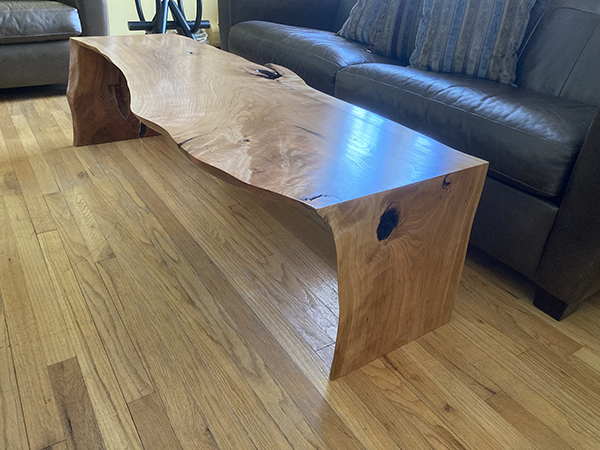
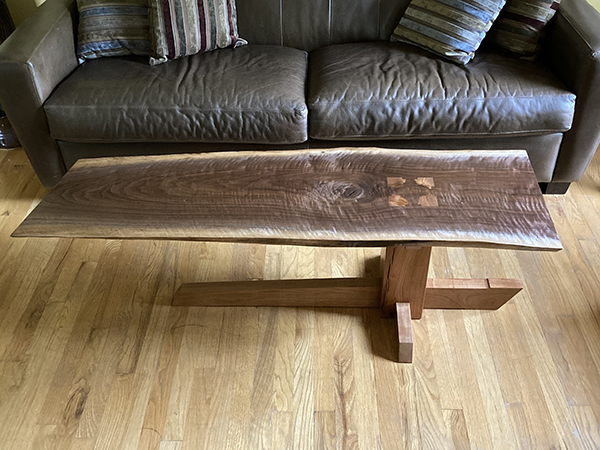
“Here are pictures of two projects using wood slabs. The ‘waterfall’ coffee table is made from a roughsawn 8-1/2 ft.-long cherry slab I bought from a man in western Michigan for under $300. I used a router and jig to create hidden grooves to imbed long splines in each miter joint. I added a butterfly on one end to stabilize the large check on one of the legs. The cantilevered coffee table is from a class I took at Marc Adams School of Woodworking taught by Taeho Kwon. It uses eastern joinery and fist tenons that go all the way through the walnut slab. The base is cherry and made from an air-dried beam that started out at 10″ x 10” x 8′ long. It is inspired by a Nakashima style bench. Because of the beefiness of the joinery, the coffee table can support many hundreds of pounds at the far end from the post.” – Joseph Paul
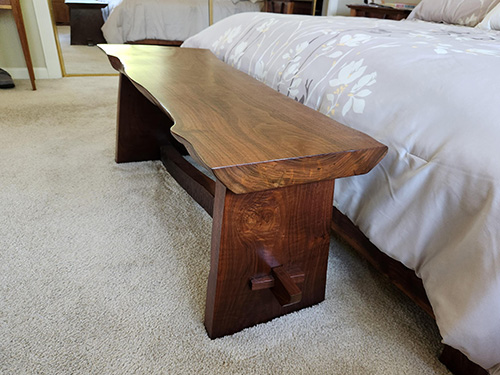
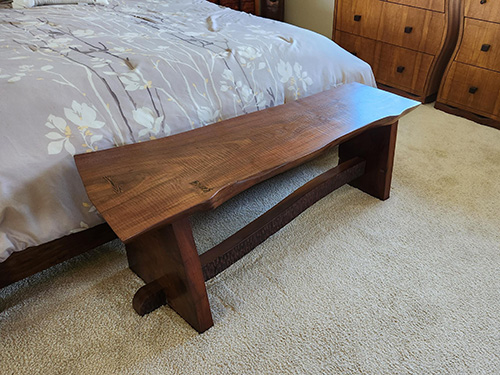
“Slab furniture.” – John Kulluk
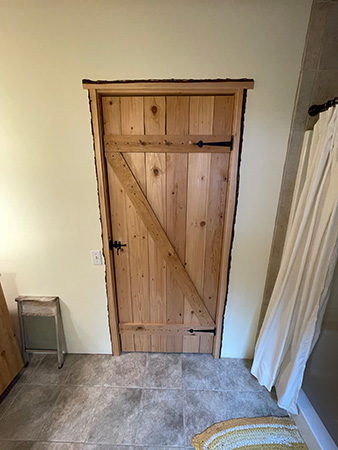
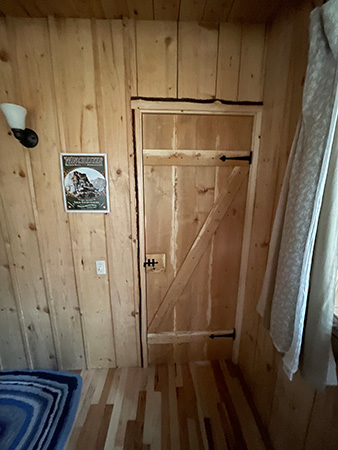
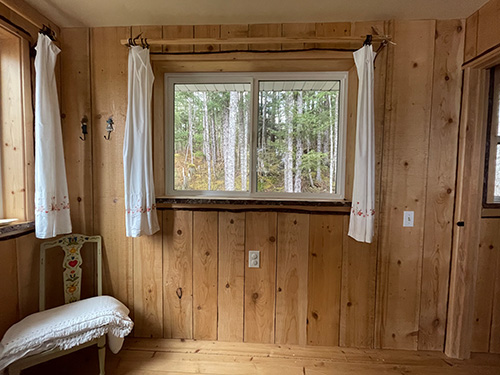
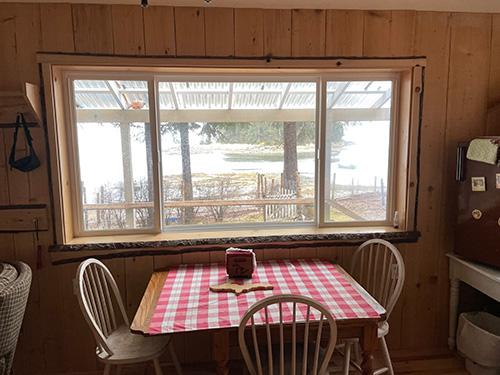
“I love to use the live edge slabs and have used it for window sills and trim in our Alaskan guest cabin. The color contrast with the dark bark is unique. If milled at the right time of the year and sealed with polyurethane, the bark seems to stay on pretty well. All the wood was milled from trees on site with a chainsaw mill. Some of the doors were made from spalted alder. Sitka spruce and western hemlock were used for dimensional lumber and inside walls.” – Arnie Strong
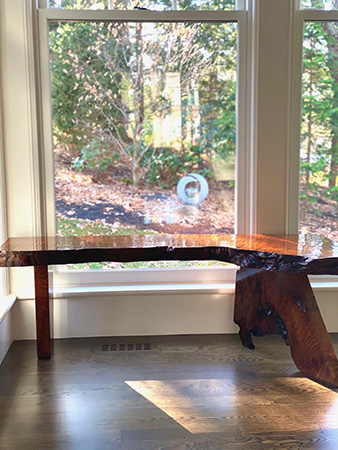
“Here is a redwood bench that my daughter and I made.” – David Bredhold





